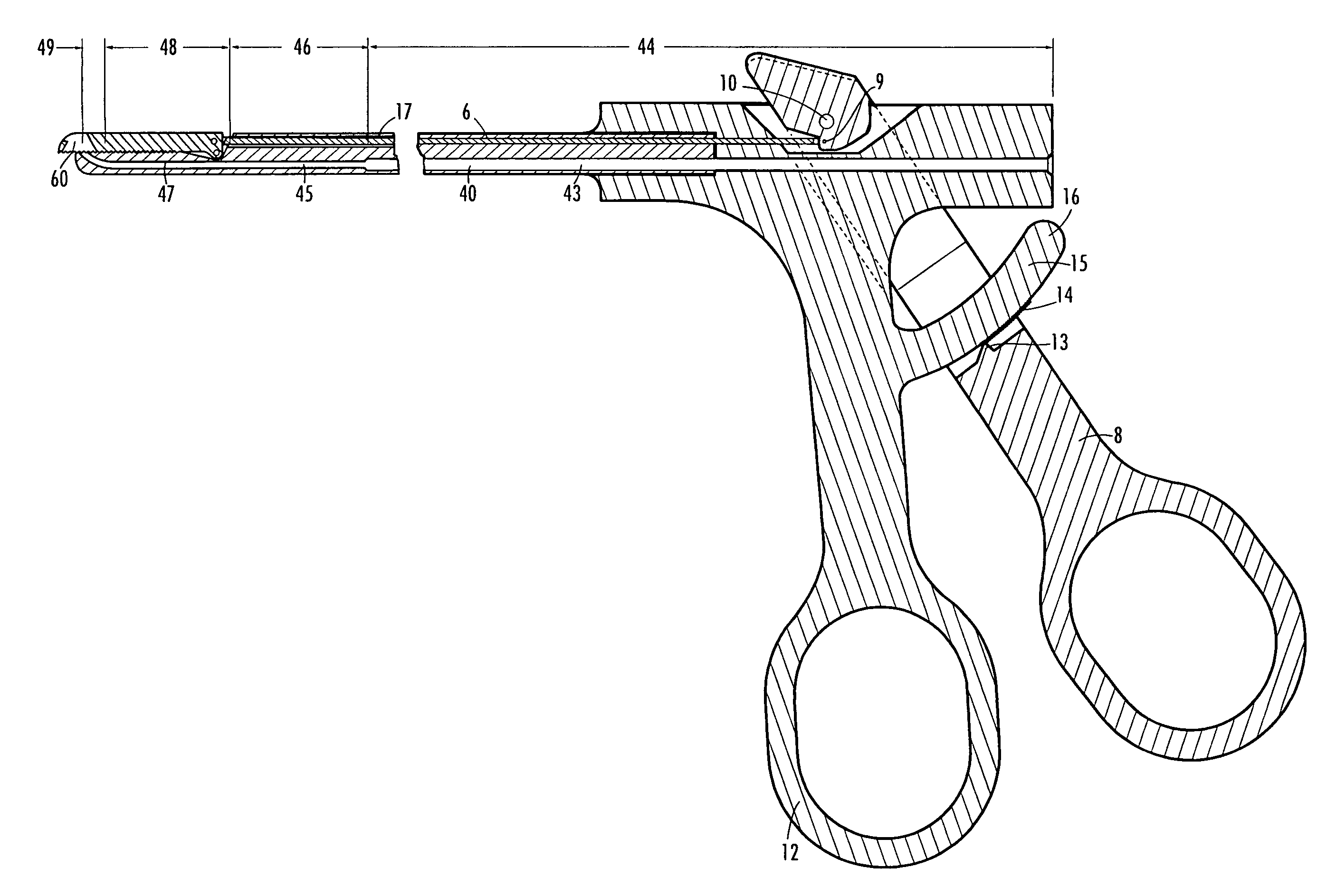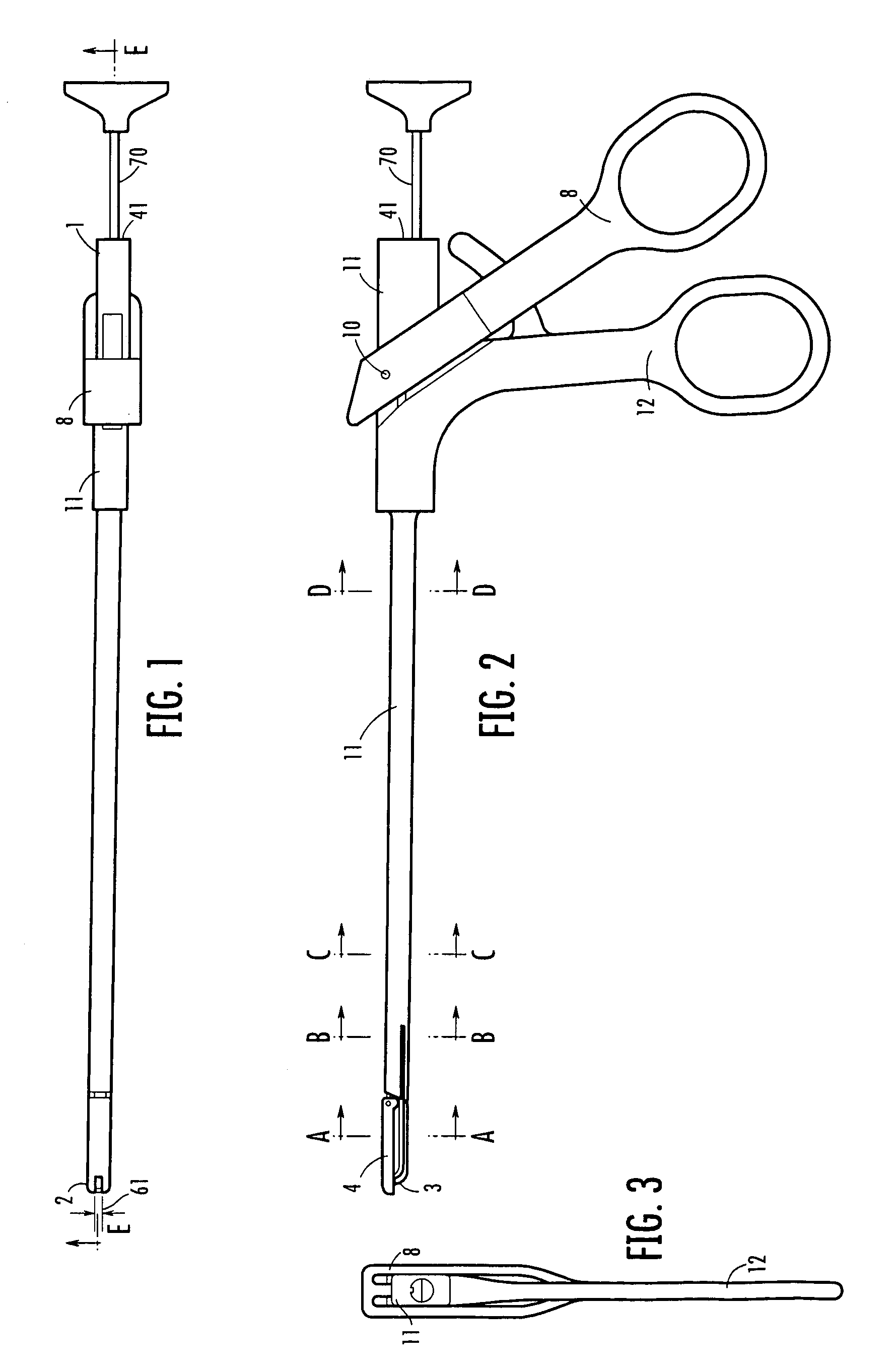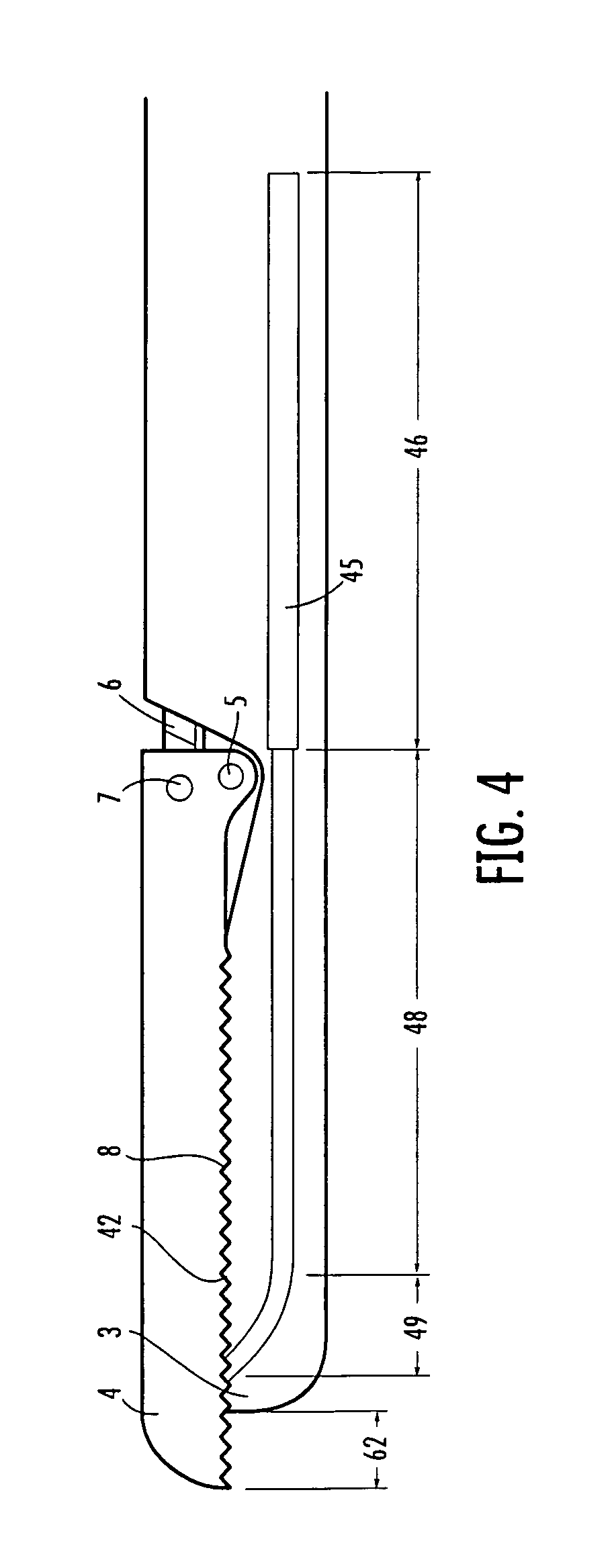Compact suture punch with malleable needle
a suture punch and malleable technology, applied in the field of surgical suturing, can solve the problems of insufficient jaw opening space, difficult to force the tooth through the full thickness of the tissue, and difficult to pass through the sutur
- Summary
- Abstract
- Description
- Claims
- Application Information
AI Technical Summary
Benefits of technology
Problems solved by technology
Method used
Image
Examples
Embodiment Construction
[0138]Referring to the drawings, as best seen in FIGS. 1 through 9, the instrument body 11 has a proximal end 1 and a distal end 2. The distal end further includes a fixed portion (or fixed jaw) 3 and a movable portion (or moveable jaw) 4. The movable portion 4 is rotatable about pin 5 passing through the movable portion 4 and fixed portion 3 thereby forming a hinge.
[0139]The position of movable jaw 4 is determined by positioning rod 6 which transmits an opening or closing force to movable portion 4 via hinge pin 7. The position of positioning rod 6 is determined by the position of movable handle 8, which is connected to the proximal end of positioning rod 6 through pin 9. The positioning rod 6 passes through elongated section 18 of instrument body 11 and through passage 17.
[0140]Movable handle 8 is rotatably affixed to the instrument body 11 by pin 10 so that rotating movable handle 8 counterclockwise opens movable jaw 4 and rotating movable handle 8 clockwise closes movable jaw 4 ...
PUM
 Login to View More
Login to View More Abstract
Description
Claims
Application Information
 Login to View More
Login to View More - R&D
- Intellectual Property
- Life Sciences
- Materials
- Tech Scout
- Unparalleled Data Quality
- Higher Quality Content
- 60% Fewer Hallucinations
Browse by: Latest US Patents, China's latest patents, Technical Efficacy Thesaurus, Application Domain, Technology Topic, Popular Technical Reports.
© 2025 PatSnap. All rights reserved.Legal|Privacy policy|Modern Slavery Act Transparency Statement|Sitemap|About US| Contact US: help@patsnap.com



